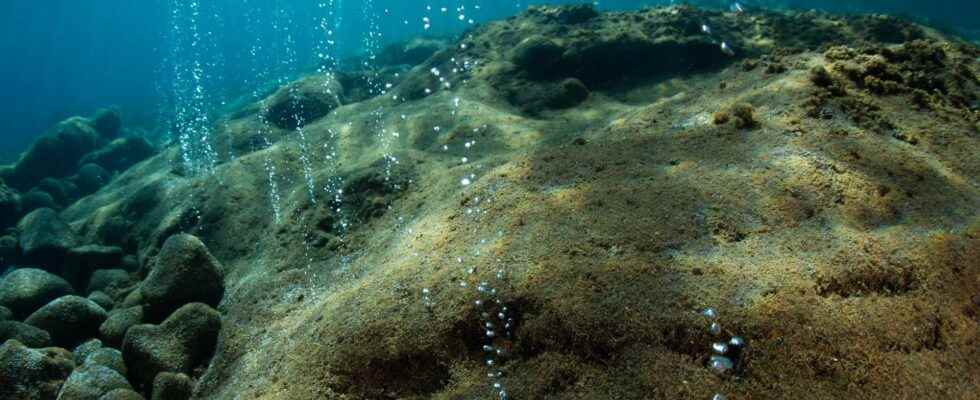You will also be interested
[EN VIDÉO] How does magma form before a volcanic eruption? Magma is the origin of the formation of volcanoes. This molten rock, which bubbles up in the crater, comes from a partial melting of the Earth’s mantle. Futura met Jacques-Marie Bardintzeff, doctor in volcanology, who tells the origin of magma.
One of the main mechanisms participating in the tectonic plates is here subductionwho sees a lithospheric plate pass under another plate to be recycled within the coat. Subduction zones are generally associated with intense volcanism, often of the explosive type. In addition, most current mountain ranges, like the Alps or the Himalayas, result from a continental collision which followed the closing of an ocean by the action of a subduction zone. These mountain ranges thus contain many clues that allow us to study, indirectly, the complex mechanism of subduction zones.
The mantle absorbs large amounts of water at subduction zones
Many parameters come into play and their variations make each subduction zone a unique dynamic system.
One of these parameters is water. It is indeed an essential element that will directly impact the fusion capacity of the mantle and the crustbut also the behavior of the magma during ascent and formation of various mineral deposits.
It has long been known that subduction zones represent highly hydrated environments. As it plunges into the mantle, the subducting plate carries with it an enormous amount of sediment waterlogged oceans. This water will significantly hydrate the rocks of the mantle and directly influence the formation of magma. The volcanic rocks issued by the volcanoes on the surface thus bear the signature of this hydrationwhich will also determine the style eruptive. More the lavas are hydrated, the more eruptions are explosive. This explains why the most destructive eruptions are generally located at subduction zones.
Finding the initial water content of a magma, a complicated problem
Until now, analysis of volcanic rocks suggested that the mantle, in this context of subduction, contained about 4% water (per unit weight). A new study, however, questions this value, putting forward the idea that the signature present in the volcanic rocks would not be representative of the actual water content of the initial magma. For the authors of the study published in Nature Geoscienceit indeed appears likely that certain processes – either at the time of the rapid rise of the magma, or when it arrives at the surface – somehow mask the original water content of the magma. liquid magmatic.
To try to find the exact value of the quantity of water, the team of researchers was interested in a certain type of igneous rocksthem plutos, which unlike volcanic rocks do not crystallize on the surface but deep within the crust. A new analytical method was also developed to study the composition of plutonic rock samples from Himalayan mountains and updatesoutcrop according to the tectonic deformation that this immense collision zone undergoes.
A more hydrated coat than we thought
The crystals of these rocks thus show much less signs of alteration than volcanic rocks, exposed to the elements on the surface. Their results show in the end that it is not 4, but more than 8% of water (by weight) that the magma would contain before its crystallization.
These results also provide a better understanding of the formation of deposits of coppergold orsilver, which requires a large amount of water. The 4% previously estimated was not enough to explain the formation of deposits of minerals. The problem is now solved. These ore deposits would thus form from magmatic fluids very rich in water (12 to 20%) which would have separated from the initial magma at the time of its crystallization. Understanding the generation of these super-hydric magmatic liquids is therefore of major interest for the search for new deposits.
Reading ideas for the summer with Futura?
To celebrate the start of the holidays, we offer you the Mag Futura at the preferential price of 15 € instead of 19 €, i.e. a reduction of 20% !
What is Mag Futura?
- Our first paper journal of more than 200 pages to make science accessible to as many people as possible
- 4 major scientific questions for 2022, from the Earth to the Moon
- Home delivery*
*Special offer valid until July 19. Delivery is made in France (excluding metropolitan France), Switzerland, Belgium.
Interested in what you just read?
